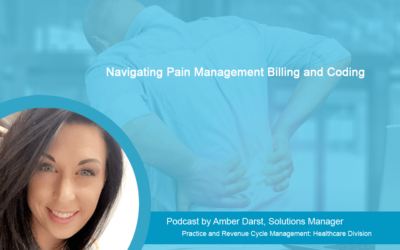Outsource Strategies International (OSI), established in 2002 is an experienced provider of comprehensive dental billing services for dentists to successfully bill for their services and focus better on their core tasks.
In today’s podcast, Amber Darst, our Dental Insurance Coordinator, discusses key challenges associated with dental billing and coding.
In This Episode:
00:19 Key challenges with changing CDT codes
CDT codes change frequently and it is important to stay up to date with the new, deleted and revised codes to prevent dental claim denials.
01:25 Common coding and claim submission challenges
Major challenges related to CDT coding are troublesome procedure codes, unable to find accurate CDT codes for the performed procedures, coverage limitations, exclusions and more.
03:33 Best practices to ensure effective claim submission
To reduce the risk of denials, report claims with up to date codes, submit clear supporting documentation and include patient’s personal information correctly.
Read Transcript
Hi, this is Amber Darst, Dental Insurance Coordinator for Managed Outsource Solutions. I just want to talk to you a little bit today about billing and specifically the CDT codes that can be quite challenging when billing.
We all know that CDT codes change frequently and they can definitely be hard to keep up with. I know keeping a copy of the most up to date CDT code book to refer to is very helpful as well as keeping an eye out for the any of the changes that may have taken place such as the new, deleted, revised codes. Watching for these changes can help avoid a coding error leading to a claim denial. So let us discuss some of the common coding and claim submission challenges. Like I have stated earlier the CDT codes that changed.
Anyone like you can expect to see revised, deleted and newly added codes. There is accommodating new technologies, materials and all procedures. As of January 1, 2020, there are 37 new codes, five revised codes, and six deleted codes. So it is very important to make note of these changes.
Another issue is troublesome procedure codes. There are a few codes are there that you really have to jump through some hoops to get approved. Couple of examples are – the D4341 for periodontal scaling and root planning, D2740, which is a crown and the D2950 for core buildup. These codes specifically require the most supporting documentation for adjudication and are the most often rejected on first submission. So just make sure you include pre and post-op X-rays as well as a narrate of stating why these procedures were necessary when you very first submit this claim. This will help aid in a quicker claim approval.
And sometimes the dentists may find that there is no CDT code to accurately describe the services they provided. Sometimes this occurs when the delivery of new or modified dental procedures and the CDT Code maintenance process are not synchronized. In this situation, the ADA recommends that an “unspecified …procedure by report” code could be considered, such as the “D2999” which is unspecified restorative procedure, by report. Any code this is “By report” must be accompanied by documentation that describes the service that was provided.
And then of course there are other issues outside of coding that can lead to a claim denial. The coverage limitations, exclusions, waiting period and the least expensive alternative treatment provisions are a few examples with some of the patients definite insurance policies. These types of policy-based denials are difficult to overcome. So, verifying a patient’s benefits before the date of service can greatly help to avoid this issue.
As a quick little summary, here are some of the best practices you can implement to ensure effective coding and accurate claim submission to reduce the risk of denials and possible allegations of fraud.
- First, you want to make sure you use the most precise and up-to-date code to reflect the procedure performed.
- And then also submit supporting documentation such as narratives and X-rays. Always make sure that the X-rays are labeled with the patient’s name and the date on which they were taken. And the narratives should be clear and concise, and also state the diagnosis and the reason why the procedure was performed.
- Also ensure all of the patient’s personal information is entered correctly on the claim such as the date of birth, Social Security number, insurance policy, group number etc.
- And lastly, if a claim is denied stating lack of dental “necessity”, even if all the required information and documentation have been submitted, you can file an appeal. Refer to the descriptor listed under the specific code in the CDT code book and re-file the claim with the better explanation as to why the services were provided.
I hope this helps. But always remember documentation and a thorough knowledge of payer regulations and guidelines is critical to ensure accurate reimbursement for the procedures performed.
Thanks for listening in!



